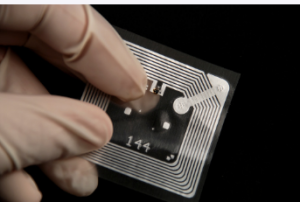RAMPRFID RFID readers can be used in various situations and applications. They have both passive and active tags. Passive RFID tags use the reader as a power source, while active ones emit beacon messages.
Active RFID tags emit beacon messages.
Beacon tags are devices that emit information and beacon messages to RFID readers. They can be found in various applications, including retail stores, healthcare facilities, and industrial warehouses. These tags emit a small, purpose-built chip that generates high-frequency energy and transmits the information. The tag is also equipped with an antenna that collects the energy from the radio wave.
 To receive the information, the reader uses Frequency Shift Keying (FSK), which changes the antenna’s impedance in response to the data stream. As a result, active tags have a better read range and are more durable than passive ones.
To receive the information, the reader uses Frequency Shift Keying (FSK), which changes the antenna’s impedance in response to the data stream. As a result, active tags have a better read range and are more durable than passive ones.
An RFID reader is portable. It can detect and inventory single tags as well as multiple tags. As a result, labels can be used in several applications, such as supply chain management, real-time vehicle tracking, and security.
A beacon can be read from a distance of hundreds of feet. But to determine the location of a beacon, the reader must first interrogate it. It is a time-consuming process, which may affect productivity.
Passive RFID tags rely entirely on the reader as their power source.
Passive RFID tags are used to track and manage goods in various industries. These tags are low-cost and do not require an external power source. Instead, the RFID tag contains a microchip, an internal antenna, and an IC (Integrated Circuit) that powers the chip.
These tags come in various shapes, sizes, and materials. Some are made of durable, weather-resistant materials, while others are plastic.
Active tags feature a larger, more rugged design and can transmit radio waves long distances. They can also be read from a much greater range than passive tags. However, they are prone to wear and tear, and their battery life is limited.
In addition, active tags can be expensive and have a high procurement cost. It makes them less popular than passive tags.
RFID tags have become a standard component of merchandise in retail stores. They are affixed to boxes, pallets, or other objects. Once a tag is scanned, information about the item’s location and content can be obtained.
RAMPRFID RFID readers are a good solution for rapid inventorying. A mobile reader usually consists of just one antenna and is integrated into a portable computer. It makes them ideal for manufacturing workflows and other applications where mobility is necessary.
RFID devices are similar to barcode readers, except they do much more. Like a barcode reader, an RFID device sends out radio waves to detect the presence of an RFID tag. Unlike a barcode, though, an RFID reader may read RFID tags from any angle.
RFID technology has been around for more than 50 years. During that time, the benefits of technology have been quite impressive. For example, RFID tags are small and can be incorporated into various items, including clothing and livestock.
Adverse events associated with RFID readers
Radiofrequency identification (RFID) is a technology that has been used in several industries. It can improve efficiency and reduce human errors. The technology is also designed to provide traceability to goods. Some applications include patient tracking and blood transfusions. However, it has raised some privacy concerns.
Although RFID can be used in various hospitals, the implementation has been modest due to the high cost of the equipment. Nevertheless, it has provided positive patient outcomes in clinical practice.
The Dutch Ministry of Health initiated a research project in 2006. This study assessed the adverse events associated with RAMPRFID RFID readers and critical care equipment. Using a McNemar test, the number of incidents was compared.
The study was conducted at the Academic Medical Center in Amsterdam, Netherlands. This facility had 1002 beds and 25 operating rooms. In the study, 41 medical devices were submitted for testing. EMI was recorded for each device.
The results showed that passive RFID tags caused EMI in an average of 26 incidents. In addition, active 125 kHz RFID systems were more likely to cause EMI than passive 868 MHz RFID systems.

